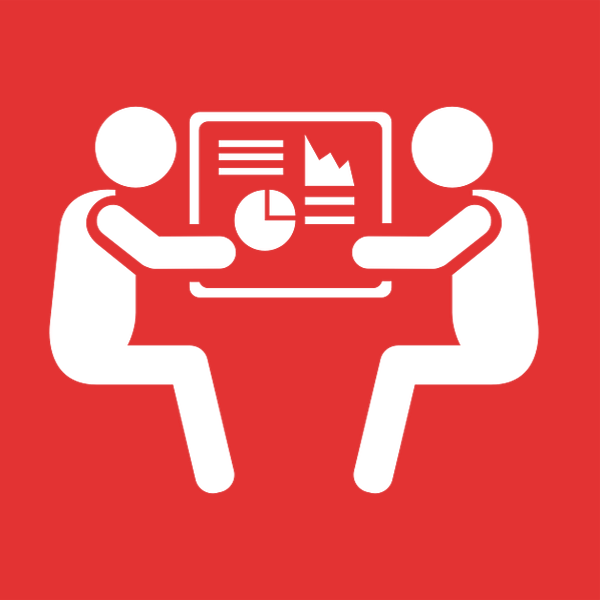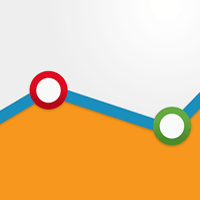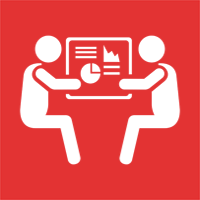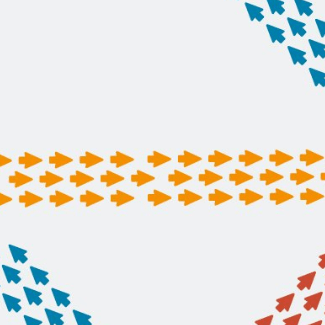Using Predictive Analytics to Take the Guesswork Out of Product Recommendations

These days the ecommerce world is loud, competitive, and customer allegiance can be fleeting. Getting noticed in an overcrowded inbox has become increasingly difficult, unless you already know what your customers want. Retailers with access to product, purchase, and customer data have a keen advantage over their counterparts who don't.
There are many automated lifecycle marketing campaigns retailers can create once they have access to data, but some of the most valuable campaigns center around helping your customers buy more. The goal of any email is to engage your customers and guide them down the path of becoming your best customer.
Here are the top three data-driven campaigns to help your customers buy more, increase customer retention, and strengthen customer relationships with your brand.
AUTOMATED REPLENISHMENT CAMPAIGNS
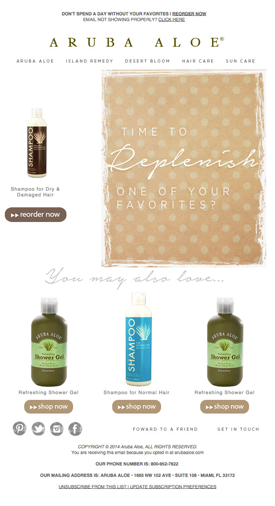 For retailers who have replenishable products, automated replenishment campaigns not only drive increased revenue, but also add value for customers and strengthen the customer-retailer relationship. As a customer, think about how great it would be to receive a reminder email when you were just about to run out of your favorite lotion, face cream, coffee, etc. If you know the average usage rates of your replenishable products, you can set up a replenishment campaign to send out X number of days after a purchase is made. With access to predictive analytics, such as predicted replenish date, retailers can create one email that pulls in a dynamic image of the product a customer purchased and is triggered based on a customer's individual buying cycle. This completely takes the guesswork out of replenishment emails and eliminates the "one size fits all" mentality.
For retailers who have replenishable products, automated replenishment campaigns not only drive increased revenue, but also add value for customers and strengthen the customer-retailer relationship. As a customer, think about how great it would be to receive a reminder email when you were just about to run out of your favorite lotion, face cream, coffee, etc. If you know the average usage rates of your replenishable products, you can set up a replenishment campaign to send out X number of days after a purchase is made. With access to predictive analytics, such as predicted replenish date, retailers can create one email that pulls in a dynamic image of the product a customer purchased and is triggered based on a customer's individual buying cycle. This completely takes the guesswork out of replenishment emails and eliminates the "one size fits all" mentality.
Aruba Aloe leverages predictive analytics and purchase data to power the replenishment campaign seen above. They use dynamic content to showcase the product that needs to be refilled and other related items that a customer might purchase. Aruba Aloe uses clean, simple copy to make sure their message is heard loud and clear. Since Replenishment emails see such high engagement, this is a great way to showcase new products for returning customers.
AUTOMATING UPSELL OPPORTUNITIES
BrewUK, an online retailer based in England that specializes in home brew beer and wine kits, utilizes product, purchase, and customer data to foster customer engagement, with the goal of retaining more customers and increasing the number of purchases customers make.
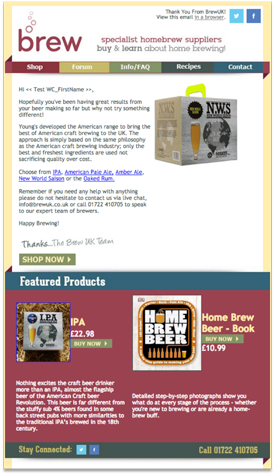 Since home brew and wine kit products lend themselves well to cross-sell and upsell opportunities, BrewUK has set up 13 different automated product recommendation emails - one for each product that has a natural upsell product associated with it. Using purchase history data, powered by Windsor Circle, BrewUK triggers these emails anywhere from 5 to 20 days after a purchase is made. The email to the right is an example of an automatic product recommendation that is sent to any customer who purchased from any of five American beer categories. This email does a fantastic job of acknowledging the product that was purchased by incorporating an image on the right, as well as using the space at the bottom of the email to push new products. BrewUK's product recommendation emails see average open rates of 42% and average click rates of 6.7%.
Since home brew and wine kit products lend themselves well to cross-sell and upsell opportunities, BrewUK has set up 13 different automated product recommendation emails - one for each product that has a natural upsell product associated with it. Using purchase history data, powered by Windsor Circle, BrewUK triggers these emails anywhere from 5 to 20 days after a purchase is made. The email to the right is an example of an automatic product recommendation that is sent to any customer who purchased from any of five American beer categories. This email does a fantastic job of acknowledging the product that was purchased by incorporating an image on the right, as well as using the space at the bottom of the email to push new products. BrewUK's product recommendation emails see average open rates of 42% and average click rates of 6.7%.
When creating automated product recommendations, retailers can segment their customer base by the category a product was purchased from or the specific item that was purchased. If you are a retailer that sells multiple brands, being able to segment by each individual brand is key for product recommendation upsell and cross-sell opportunities. Some industries lend themselves to category or item specific product recommendations; while other industries are able to leverage both category and item based product recommendations. As you build out automated product recommendations, make sure to take a look at your top revenue generating products, products that have accessories, and products that correlate with retained customers (customers who have purchased 3+ times).
AUTOMATED CART RECOVERY EMAILS
Cart abandonment is a problem that plagues almost every retailer, and finding a way to drive customers to come back and purchase can be difficult at times. BrewUK set up a 3-part cart recovery series that is triggered 1 hour, 1 day, and 7 days after a cart is abandoned. The messaging and discount on these three messages (seen below) escalates from no discount to 5% off on the third email in the series.
- Email 1 - Do you require any assistance with your purchase? (no discount)
- Email 2 - We've saved the items in your shopping cart (no discount)
- Email 3 - Purchase now and get 5% off your order! (5% discount)
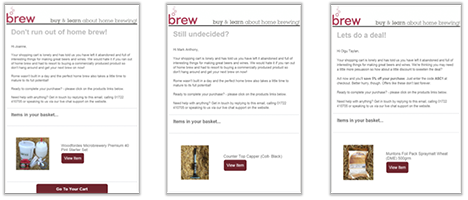
BrewUK also set up three anti-gaming cart recovery emails, so their customers aren't trained to abandon their carts for a discount. Anti-gaming technology automatically detects individuals who are trying to trigger discounts by intentionally abandoning their cart. The three anti-gaming emails mimic the normal cart recovery emails, except there are no discount codes. Instead, customers are directed to call customer service to help with their order. BrewUK's cart recovery campaign has a 30% conversion rate (making more than $100k since being deployed), a 56% open rate, and 16% click rate.
Leveraging product, purchase, and customer data, BrewUK tripled customer engagement, and increases their repeat buyer segment by 28%. Their product recommendation and cart recovery emails account for 62% of the revenue they make from data-driven lifecycle marketing. Download the full case study to learn more about BrewUK's automated email marketing strategy.
With access to data comes the ability to send relevant, timely, and valuable emails to your customers. With access to predictive analytics and data, comes the ability to send emails to help customers buy what they need before they even know. With factors like brick-and-mortar stores going digital, consumers having multiple email accounts, tighter spam filters, and increasing "unsubscribe" numbers, building relationships with your customer base and adding value is key to making sure you aren't relegated to the promotions tab, the spam folder, or deleted from the inbox for good.

